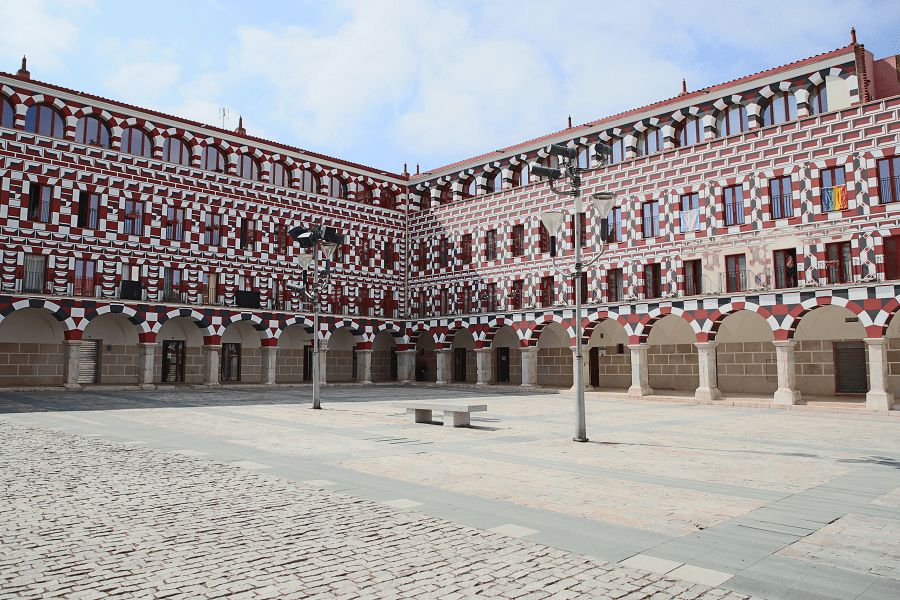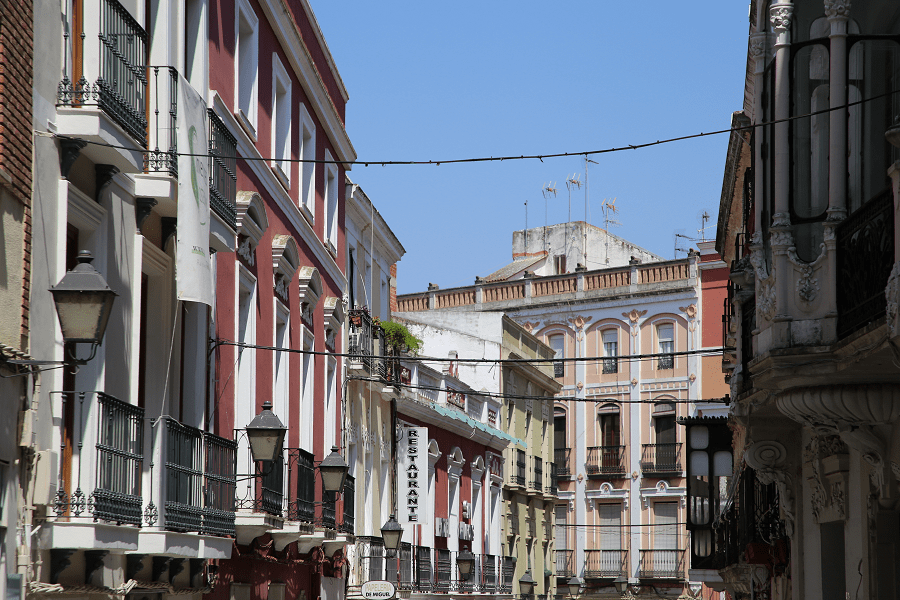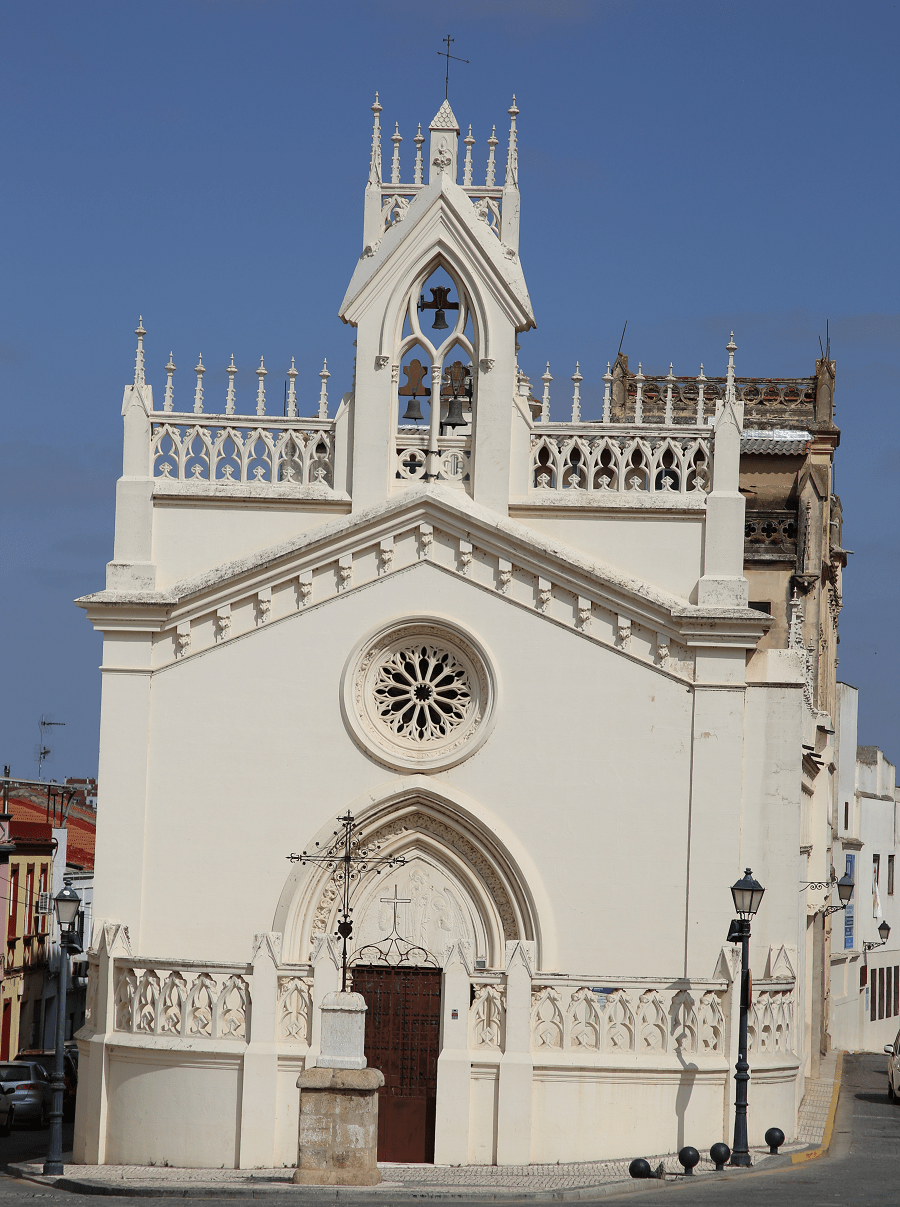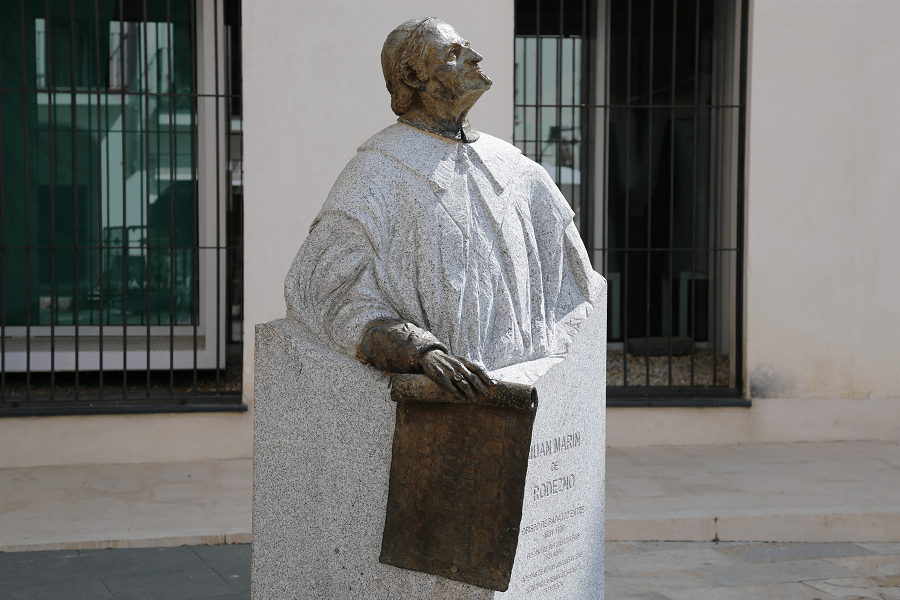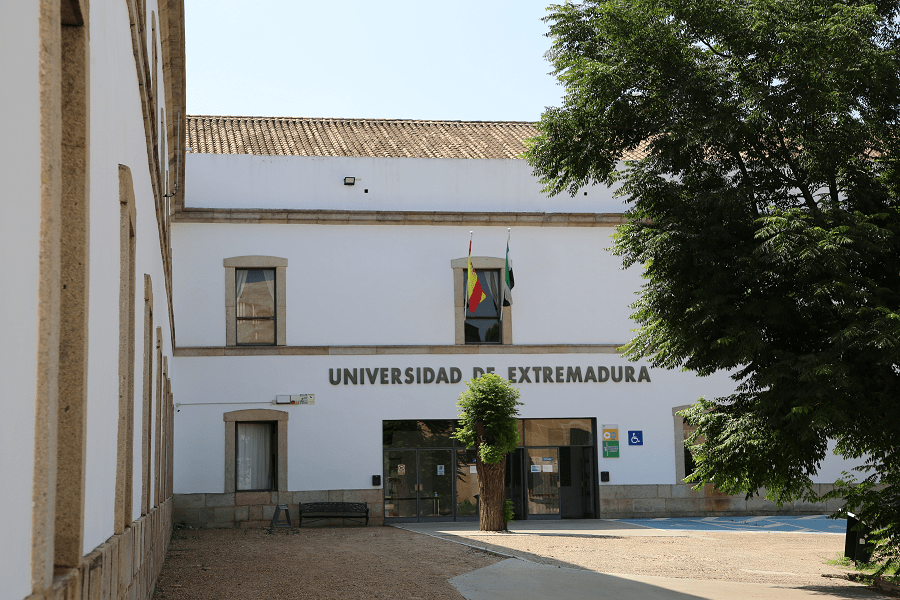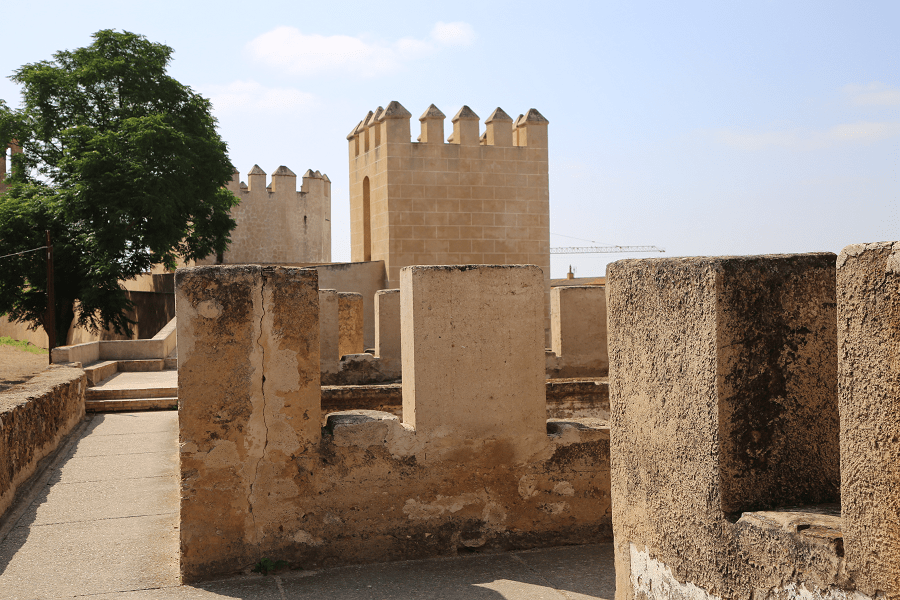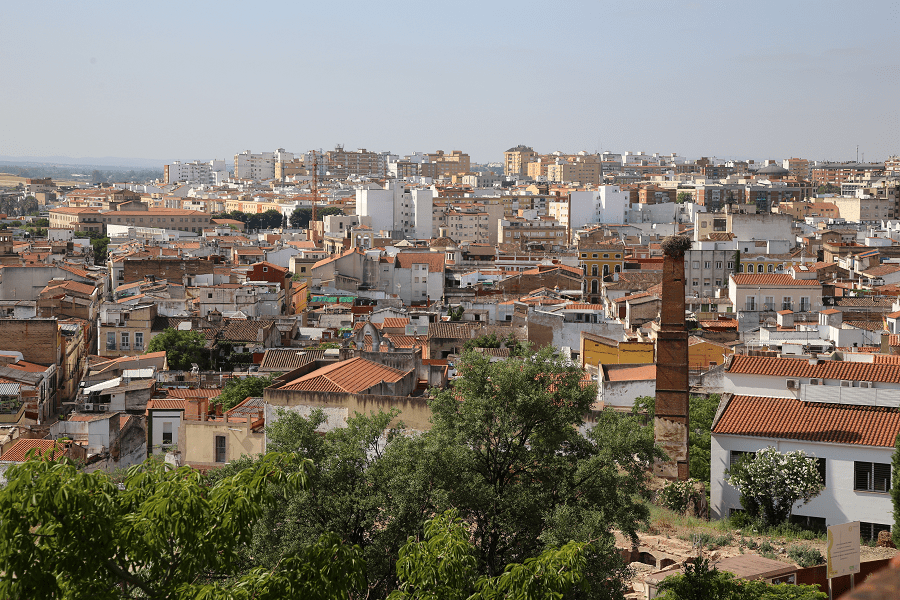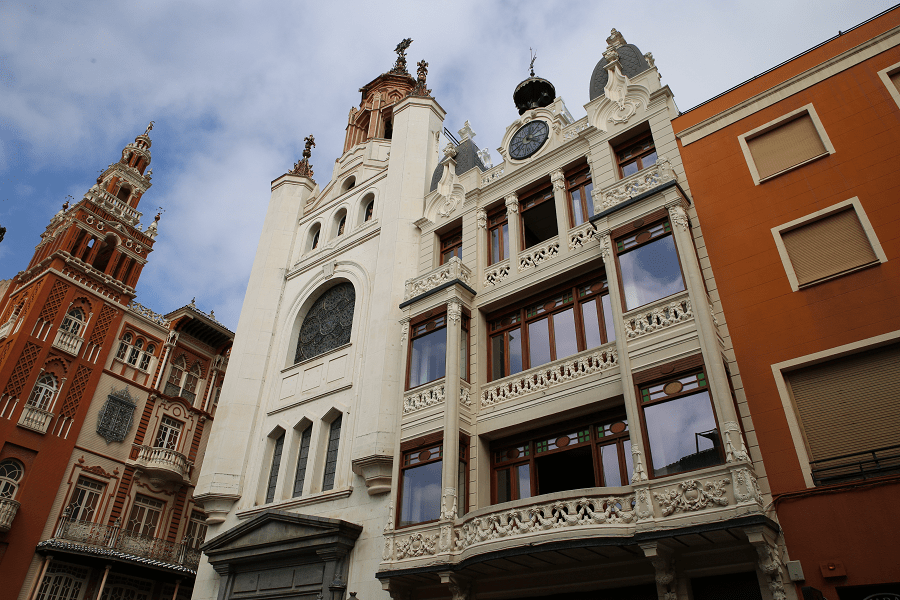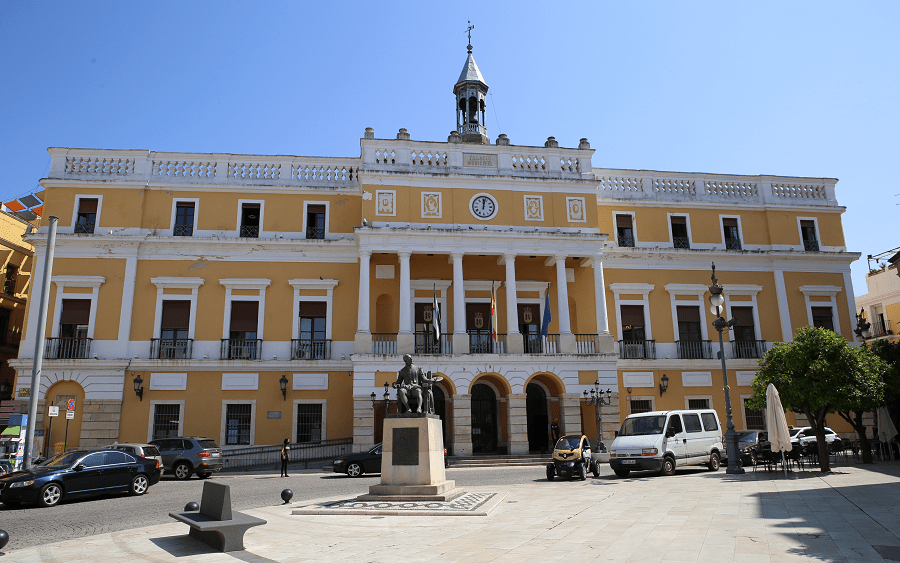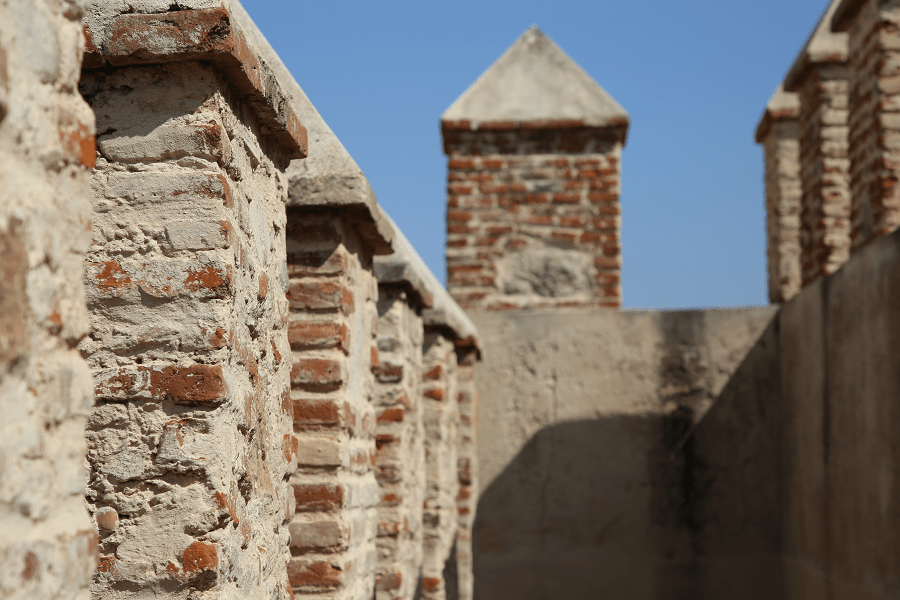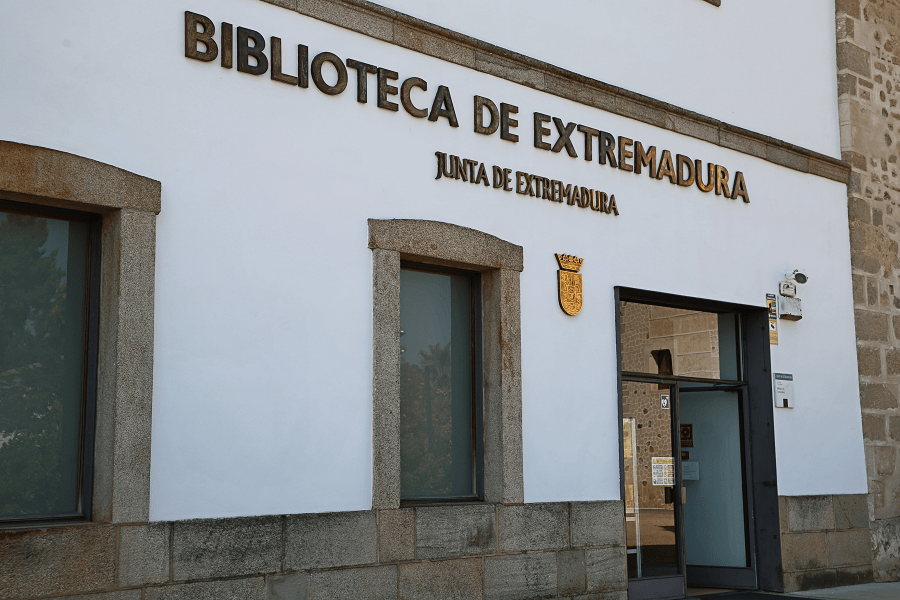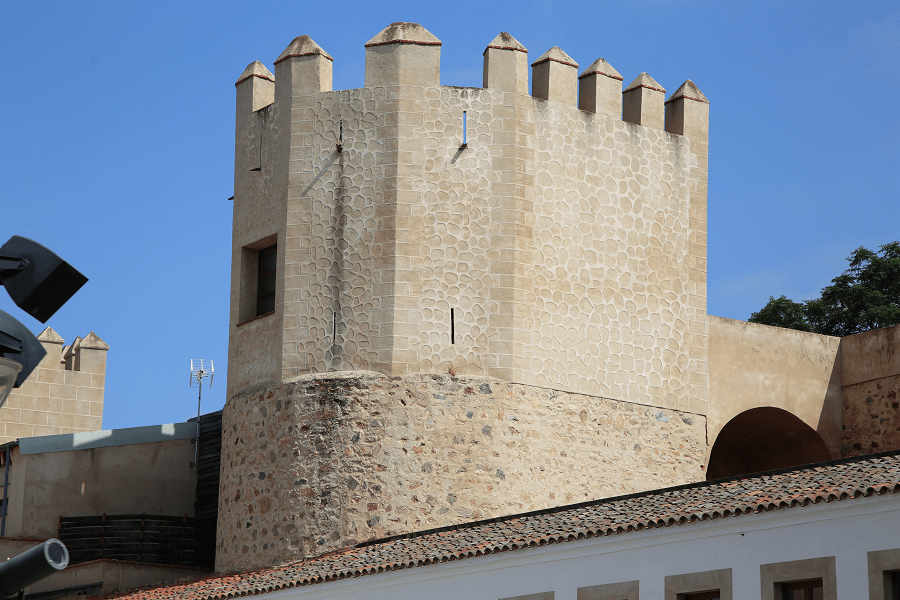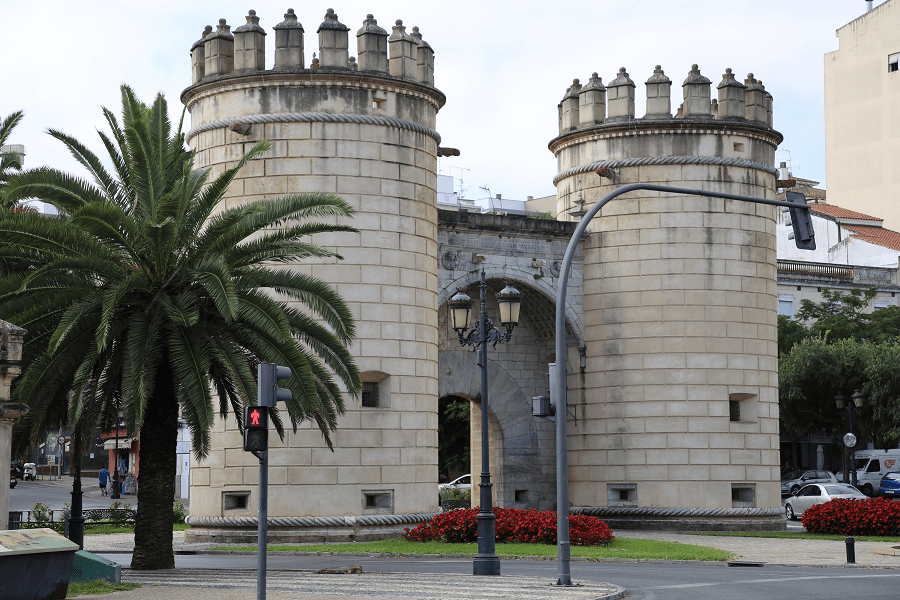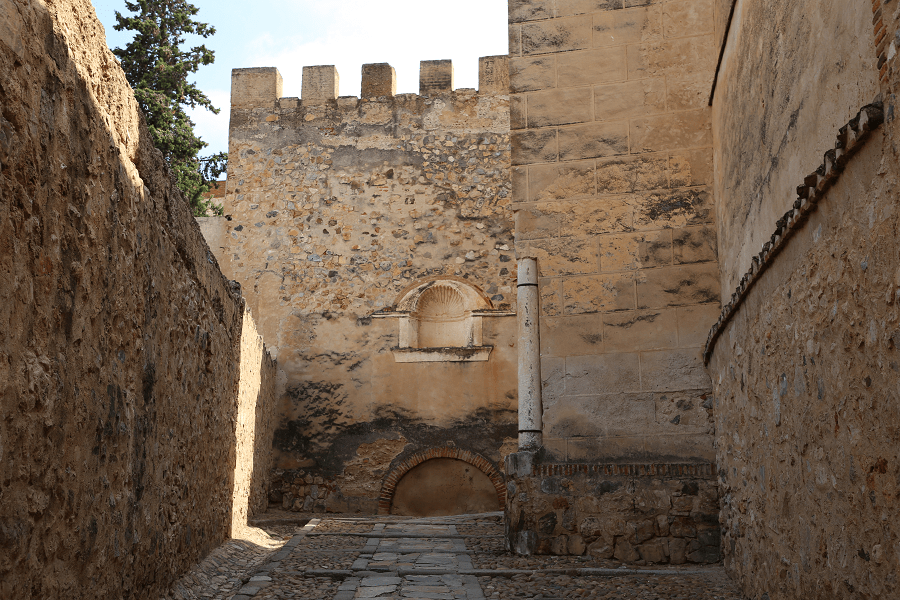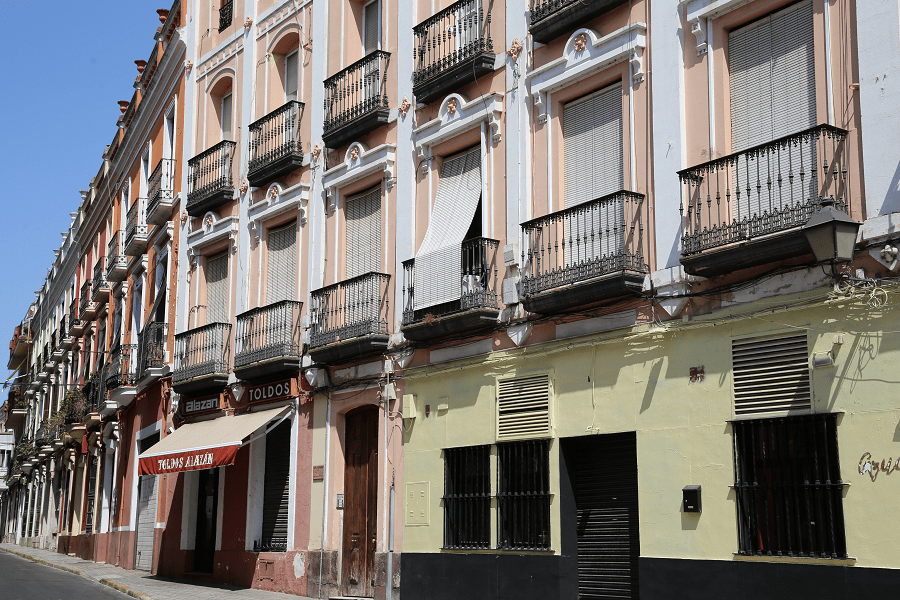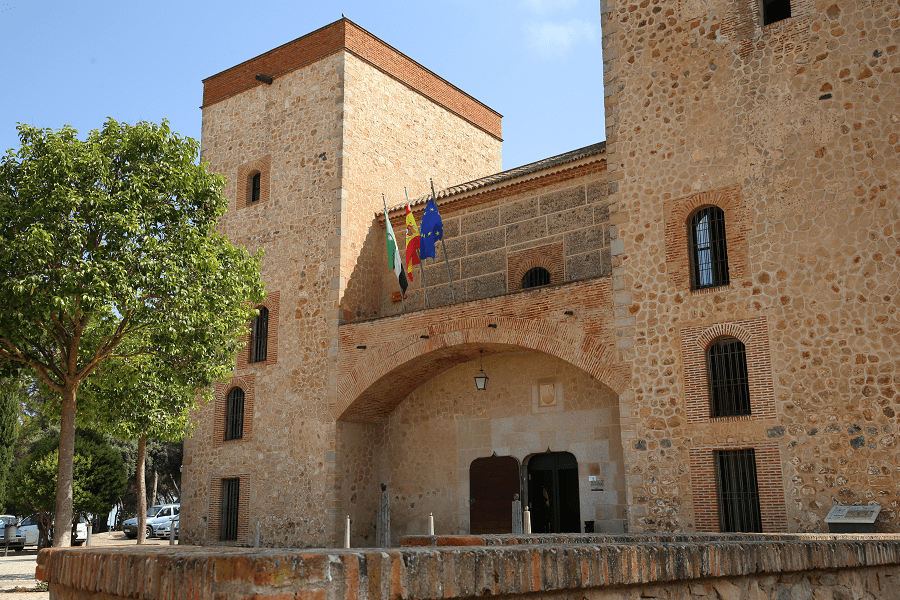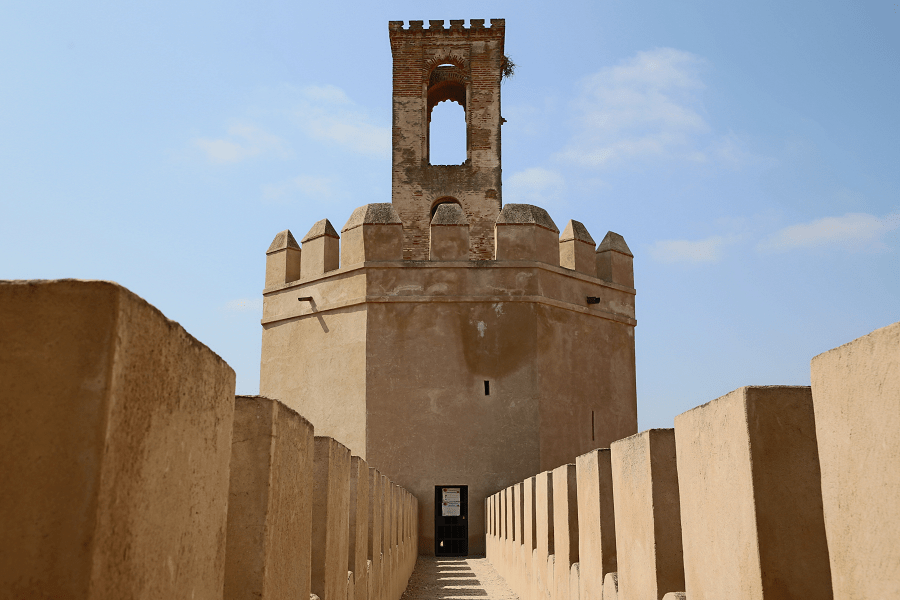Badajoz is the capital of the Province of Badajoz in the autonomous community of Extremadura, Spain. It is situated close to the Portuguese border, on the left bank of the river Guadiana.
Its geostrategic and border importance conditioned its history as a fortress and walled city, being the axis of diplomatic relations between Spain and Portugal, and royal treaties or weddings were celebrated in the city.
In 1580, Felipe II moved the entire Court to Badajoz, while the Lusitanian occupation campaign was being developed. At present, its good cross-border relations with the Portuguese and neighboring Elvas have led to an agreement, since 2013, as Eurocity, to promote joint growth.
The Old Town, also known as the historic neighborhood, makes up the oldest sector of Badajoz. Despite having been heavily affected by numerous wars, it preserves a multitude of buildings in its Historic-Artistic Complex declared an Asset of Cultural Interest, with an important historical and archaeological complex in its monumental part.
The Alcazaba of Badajoz, the Metropolitan-Cathedral of San Juan Bautista de Badajoz, the Plaza Alta and the old Town Hall, the walls and various fortifications of its bastioned Vauban-style enclosure, the Torre de la Atalaya or Espantaperros, the Puerta de Palmas, the Bridge of Palmas over the Guadiana, the Godoy Palace, the Convent of Las Carmelitas, the Puerta del Pilar, the Puerta de la Trinidad, the Church of Santo Domingo, the Church of the Conception, the Church of Santa Catalina, the Church of San Agustín and the Royal Monastery of Santa Ana (where Ana de Austria, queen consort of Felipe II, was buried), among many other buildings and historical vestiges of different styles, periods and functionalities.
The walled enclosure of Badajoz is the longest in Spain and the city’s Arab fortress is the largest in Europe and one of the largest in the world in terms of its perimeter and extension.
Recently positioned as “Cultural Capital of the Iberian Southwest”.
Tourism and main attractions
The city is studded with Moorish and medieval architecture, although its remnants of Roman and Visgothic architecture are not as prominent as in nearby Mérida. The Alcazaba fortress is the most notable structure in the city which attests to the Moorish culture in Badajoz. It was the only important fort on the southern Portuguese frontier during the 17th and 18th centuries and controlled the routes of southern Portugal and Andalusia and was a staging point for invasions against Portugal.
Many of Badajoz’s historical monuments which were in ruins have been refurbished. Its restaurants, pubs and nightlife are a major attraction for the Portuguese across the border. The 13th-century Badajoz Cathedral (converted from a mosque in 1238) is in the old city and its architecture is indicative of the tempestuous history of Badajoz, resembling a fortress, with its massive walls. Three of the cathedral’s windows are unique – one is in Gothic style, the second is Renaissance style and the third is in Platersque style.
List of the monuments:
Spain Square. It constitutes the main nucleus, whose current layout was projected by the municipal architect Rodolfo Martínez, during the year 1918 and within it the great cathedral mass that centers the historical-artistic interest of the entire area.
City Hall. This was not the usual location of the House-Town Hall, since it was previously installed in other areas that made up the urban area in previous centuries.
Cathedral of San Juan Bautista. Its construction began in 1232, shortly after the arrival of the Christians in Badajoz. Its location is curious, far from the walled enclosure although, perhaps, it was built on a small Visigothic or Mozarabic church.
Monument to Morales. Located in the Plaza de San Juan, in front of the Town Hall, and made by the Extremaduran sculptor Gabino Amaya. It was conceived with a large pedestal on which is placed the seated portrait of the painter Luis de Morales who carries his palette and brushes.
Buiza House. An attractive work in a regionalist style, since the beginning of the 20th century the north side of the square has been secularized. The architects Curro Franco and Adel Pinna worked between the years 1918 and 1921.
Cristóbal Oudrid’s birthplace. Remade by Benito Escoriaza in 1894, it was the musician’s birthplace in 1825.
Casa del Cordón. It is a private home that deserves to be highlighted for its façade, which contains the cord that gives it its name. Stylistically it belongs to the late Gothic of the early 16th century. It is currently the seat of the Archbishopric.
Royal Economic Society of Friends of the Country. Founded in 1816, it settled on Calle Hernán Cortés in 1837, becoming from that moment on an important cultural center of the city.
Cervantes Square. Preserves its 19th-century flavor. All the chroniclers cite it as an important place throughout the history of Badajoz. Part of what today occupies the space of the square was an area belonging to the church of San Andrés and its attached cemetery, a fact that was frequent until the 19th century.
Puebla House. This building is one of the works of Adel Pinna, author of numerous buildings scattered throughout the historic center of Badajoz. The project was signed by the architect Manuel Martínez in 1921. The Casa Puebla is one of the examples of regionalist architecture of Andalusian influence in which an eclectic style is used.
Museums
Extremadura and Ibero-American Museum of Contemporary Art, MEIAC. It brings together collections of Spanish, Portuguese and Latin American artists. It was inaugurated on May 9, 1995. The building is located on the site of the old Preventive and Correctional Prison of Badajoz.
Provincial Museum of Fine Arts. Located in two palatial houses from the 19th century, next to the Plaza de la Soledad, it has 2000 square meters in which more than 1200 pieces of painting and sculpture are exhibited, representing more than 350 artists such as Zurbarán, Luis de Morales, Flemish painters, Francisco de Goya, Felipe Checa, Torre-Isunza, Eugenio Hermoso, Adelardo Covarsí, Antonio Juez Nieto, Francisco Pedraja Muñoz, Picasso and Dalí, among others.
Museum of the City “Luis de Morales”. Built in the supposed house of the Renaissance painter Luis de Morales, better known as “El Divino Morales”, it goes over the history of the city from its origins in an entertaining way. In addition, it is an Interpretation Center of the History of Badajoz.
Provincial Archaeological Museum. Located within the largest fortress in Europe, the Archaeological Museum contains pieces of undoubted interest, from all corners of the province of Badajoz. The building that houses it, the Palace of the Dukes of Feria, is a Mudejar jewel from the 16th century. Its collection is organized into six major areas: Prehistory, Protohistory, Roman, Visigothic, Islam and Medieval Christian.
Metropolitan Museum of the Cathedral of Badajoz. It is located in the premises of the Metropolitan Cathedral of San Juan Bautista, one of the most important cathedrals in the region and seat of the Archbishopric of Mérida-Badajoz.
Bullfighting Museum of Badajoz. The main bullfighting museum in the region, located in the center of the city, collects posters, photographs and objects from the bullfighting world, which make its historical collection one of the best bullfighting museums in Spain to learn about its history.
Badajoz Carnival Museum. Inaugurated at the 2007 carnival in the so-called “Poterna de Menacho”, in the Baluarte de Santiago, it has a journey through the history of the Badajoz carnival. In 2008 it became part of the Extremadura Museum Network.
Interpretation Center of Border Fortifications (Fort of San Cristóbal).
Badajoz Veterinary Museum. It is the Veterinary History Museum of the Illustrious College of Veterinarians of the Province of Badajoz, inaugurated in 2018.
Extremadura Sports Museum.
Museum of Military History, in the Capitanía Palace (a 16th century building remodeled in the 19th century).
Science Museum (Museum of Sciences, Technologies and Innovation of the Iberian Southwest).
Cuisine and restaurants
As for gastronomy, the typical dishes of Badajoz are made with farm products such as wild asparagus, mushrooms and Extremadura gazpacho.
Dishes made with the typical meat of the area such as partridge, rabbits, pigeons, turtledoves and deer. Highlight the slaughter of the pig, from which all its organs are used, giving rise to sausages, blood sausages, hams and many other cold meats.
Other typical meat-based dishes are lamb liver with onion, roast lamb. Cod and fried tench are also very typical of Badajoz.
In wines, highlight the Ribera del Guadiana Denomination of Origin for white, rosé and red wines. Cheese is another highly requested product in this land, such as Goat Cheese and Torta de La Serena (Sheep Cheese).
There are two Michelin list restaurants in the city:
Drómo, Plaza La Molineta 8, 35 – 72 EUR • Modern Cuisine
Lugaris, Avenida Adolfo Díaz Ambrona 44, 30 – 45 EUR • Traditional Cuisine, Regional European
Transport and how to get to?
Badajoz railway station, situated in the north of the city, is the only railway station at Badajoz. The station accommodates long-distance and medium-distance trains, both operated by the public company RENFE. It is the last Spanish railway station before the Portuguese railway system.
Badajoz Airport is located 13 km east of the city centre. The airport currently caters for two civil routes, one to Barcelona and the other to Madrid, both operated by Air Europa.
From Merida 49 min (63.8 km) via A-5
From Caceres 1 hr 16 min (91.7 km) via N-523
From Madrid 3 hr 58 min (400 km) via A-5
Main information
Area: 1440 sq. km (municipality)
Coordinates: 38°52′49″N 6°58′31″W
Population: 150 984
Languages: Spanish
Currency: Euro
Visa: Schengen
Time: Central European UTC +1



